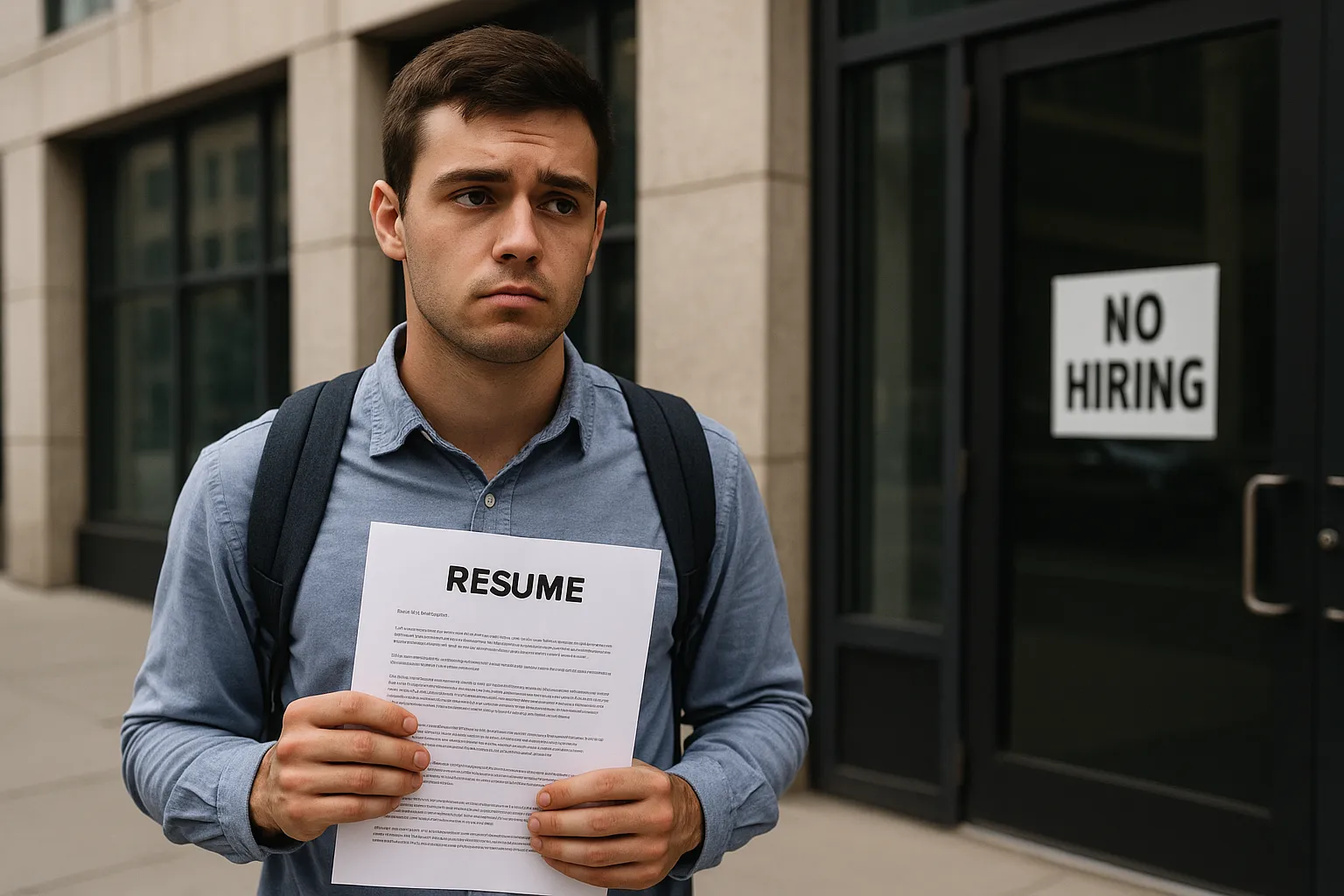The US job market stagnation is not a headline you will see from Wall Street. Official unemployment hovers at low levels, the Fed boasts about “soft landings,” and economists celebrate resilience. Yet beneath the surface, the reality is brutal: young workers cannot find stable jobs, entry-level hiring slows to a crawl, and the very generation meant to power the future economy is being left behind.
Context: the illusion of stability
The numbers tell a story of contradiction. Employers keep workers, fearing skills shortages. Layoffs are rare, so unemployment looks fine. But hiring stalls. New graduates find doors closed. Temporary contracts replace permanent ones. Wage growth stagnates for the bottom half of the labor force.
The Fed’s interest rate policies make it worse. With borrowing costs high, companies hesitate to expand payrolls. Startups freeze hiring, while big corporations automate instead of employing.
The mainstream insists: “The job market is stable.” But stability for insiders is stagnation for outsiders.
Oppositional argument: the Fed protects markets, not workers
The Federal Reserve frames its mission as balancing inflation and employment. In practice, it shields investors. Rate hikes slow inflation — but at the cost of suffocating new opportunities. Youth bear the brunt because they have no seniority, no savings, and no leverage.
It is easy for Fed officials to speak of “cooling labor demand.” They do not feel the despair of a graduate rejected from fifty jobs. They do not sit with gig workers juggling four apps just to pay rent.
The Fed protects capital. Workers are collateral.
Analytical breakdown: three cracks in the labor system
- Hiring freezes: Entry-level positions shrink, with companies demanding experience for “junior” roles.
- Education mismatch: Students accumulate debt for degrees that no longer guarantee careers.
- Policy lag: Fed interest decisions operate on the entire economy, yet fail to target structural inequality.
Together, these cracks create a vicious cycle. Without good jobs, young people delay housing, family, and consumption. That slows growth, which deepens stagnation.
Human perspective: a lost generation?
I spoke with a 24-year-old graduate in Ohio: “My parents told me to study hard, and companies would line up. I have two degrees, and I deliver food.”
Another in California said: “I applied for 80 jobs in tech. They all want 3 years’ experience for an entry-level role. How is that possible?”
These voices reveal the reality: a generation robbed of its economic promise, told to “wait it out” while policymakers applaud stability.
Counterarguments and their emptiness
Some argue youth unemployment is “temporary.” But it has been years since entry-level hiring recovered. Others claim automation will create new opportunities. Perhaps, but not fast enough to absorb today’s graduates.
And the favorite line — “young people should adapt” — is an insult. They already adapt, hustling gigs, freelancing, coding at night. Adaptation without opportunity is exploitation.
Conclusion: the price of inaction
The US job market stagnation is not harmless. It is a structural crisis. Youth exclusion is not a statistic; it is a time bomb. A generation without secure work cannot build wealth, trust institutions, or sustain democracy.
If the Fed and lawmakers continue to hide behind positive unemployment numbers, they will preside over a hollow economy: stable on paper, broken in reality.
America must choose: protect markets, or protect workers. Right now, it chooses the former. And young people pay the price.
External references: WSJ report, Reuters coverage.
100 views